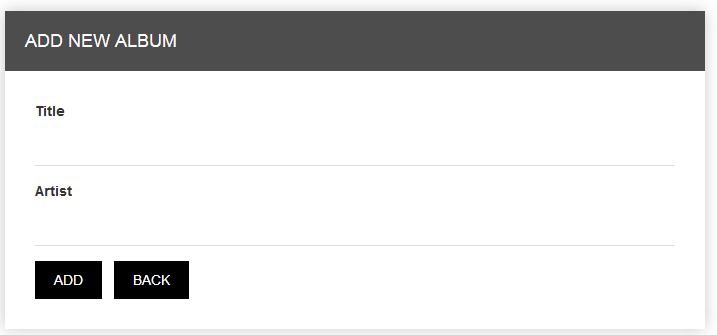Question: What is HttpClient?
HttpClient provide an easy way for performing
HTTP Request.
Zend\Http\Client provide HTTP request, HTTP request with authentication and file upload, set header, set cookie etc.
After calling HTTP Request, Response object is return from Zend\Http\Response.
Question: Question: How to send request with GET Method?
use Zend\Http\Client;//Include this if you have not already included
$client = new Client('http://example.org/ajax/get-detail/id/100', array(
'maxredirects' => 0,
'timeout' => 30
));
$response = $client->send();
echo $response->getBody();//This have response
Question: How to send request with POST Method?
$client = new Client('http://example.org/ajax/get-detail/id/100', array(
'maxredirects' => 0,
'timeout' => 30
));
// Performing a POST request
$client->setMethod('POST');
//Set data
$client->setParameterGet(array(
'first_name' => 'Bender',
'middle_name' => 'Bending',
'last_name' => 'Rodríguez',
'made_in' => 'Mexico',
));
$response = $client->send();
echo $response->getBody();//This have response
Question: How to send request on https URL?
Sometimes, Normally you can't send ajax request to https URL.
In that case, you need to send SSL path.
$client = new Client('https://example.org/ajax/get-detail/id/100', array(
'sslcapath' => '/etc/ssl/certs'
));
Question: How to check HTTP request is successfully.?
if ($response->isSuccess()) {
// Here is success
}
Question: What are different Adapter available in HTTP.?
Following adapters are available.
- Zend\Http\Client\Adapter\Socket (default)
- Zend\Http\Client\Adapter\Curl
- Zend\Http\Client\Adapter\Test
- Zend\Http\Client\Adapter\Proxy
Question: How to set HTTPS transport layer in Http Request?
$client = new Client('https://example.org/ajax/get-detail/id/100', array(
'adapter' => 'Zend\Http\Client\Adapter\Socket',
'ssltransport' => 'tls'
));
Question: How to set Proxy Server in Http Request?
$client = new Client('https://example.org/ajax/get-detail/id/100', array(
'adapter' => 'Zend\Http\Client\Adapter\Socket',
'adapter' => 'Zend\Http\Client\Adapter\Proxy',
'proxy_host' => 'proxy.int.zend2.com',
'proxy_port' => 8000,
'proxy_user' => 'username',
'proxy_pass' => 'mypassword'
));
Question: Why Test Adapter are used?
Test Adapter is used to Test the API where APIs are currently
not available.
For this, we use Zend\Http\Client\Adapter\Test.
In the Test Adapter, we also set the response.
Question: How can we set the cookie?
$client = new Client('http://example.org/ajax/get-detail/id/100', array(
'maxredirects' => 0,
'timeout' => 30
));
//Set Single cookie
$client->addCookie('flavor', 'chocolate chips');
Set cookie from String
$cookieString = \Zend\Http\Header\SetCookie::fromString('Set-Cookie: flavor=chocolate%20chips');
$client->addCookie($cookieString);
Note, setCookies are also available.
$client->setCookies(array(
'flavor' => 'chocolate chips',
'amount' => 10,
));
Question: How to set header in Curl?
You can set the Header in http_client in following way.
$client->setHeaders(array(
Zend\Http\Header\Host::fromString('HostName: Web technology experts Notes'),
));
$client->setHeaders(array(
'Accept-Encoding' => 'gzip,deflate',
'X-Powered-By: Web technology',
));
Question: How to upload a file in Http Client?
$client->setFileUpload('/filename.text', 'FileName');
Question: How to send xml to Http Client?
For this, you need to set the content type to text/xml.
$client->setRawBody($xml);//$xml have XML content
$client->setEncType('text/xml'); //used to set the content
Question: How to pass Brower Authentication in Http Client client?
This is used when you need to pass the Authentication to call Request.
$client->setAuth('username', 'password', Zend\Http\Client::AUTH_BASIC);
Question: What is Zend\Http\ClientStatic?
Zend\Http\ClientStatic component is static HTTP client which used to Simple Get/Post Request.

















